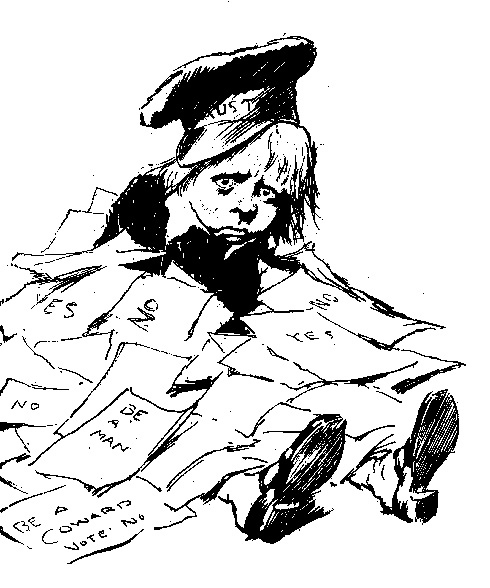Simanaitis Says
On cars, old, new and future; science & technology; vintage airplanes, computer flight simulation of them; Sherlockiana; our English language; travel; and other stuff
HAIL TO THEE (WHOEVER HE OR SHE IS) PART 1
IN THESE PERHAPS overly nationalistic times, it seems appropriate to review national characters, emblematic personages of the world. Plenty of countries get by with a generic Mother This or Father That, but I’m interested here in more personalized entities.
Here are selected tidbits in Parts 1 and 2, today and tomorrow. To promote international goodwill, I list them alphabetically by country of origin.
Australia’s Little Boy from Manly. It was 1885, and Australia was embarking on its first overseas military adventure. Its Patriotic Fund received a £25 donation “with my best wishes from a little boy at Manly.”
American-born Australian cartoonist Livingston “Hop” Hopkins transformed this Manly, New South Wales, kid into what Wikipedia calls “a symbol of Australian patriotism or, among opponents of the adventure, of mindless chauvinism.”
As so it is with other national personages.
Canada’s Johnny Canuck. Originating in political cartoons in 1869 as a younger cousin of Britain’s John Bull and the U.S.’s Uncle Sam, Johnny was wholesome and simple-minded, resisting the bullying of these and other guys.
Johnny had good legs: He returned during World War II as a teenager fighting Nazis. In 1975, he reemerged as a Captain with superhero status, red and white tights, and a red maple leaf on the forehead of his mask. In 1995, Captain Canuck warranted inclusion in a series of Canadian superhero postage stamps. Two comic books of his adventures were published in December 2010 and March 2011.
France’s Marianne. Marianne is noteworthy as being beyond the generic Mother Wherever. She arose in the 1789 French Revolution as a symbol of freedom and of opposition to monarchy. Thus, Marianne’s reputation waxed and waned with changes in French government.
There were the First Republic (1792–1804), Napoleon I’s First Empire (1804–1814), Bourbon Restoration (1814–1830), July Monarchy (1830–1848), Second Republic (1848–1851), Second Empire (1852–1870), Third Republic (1870–1940), Vichy Government (1940–1944), De Gaulle Provisional Government (1944–1946), Fourth Republic (1946–1958), and Fifth Republic (since 1958).
Whew!
Marianne isn’t the only one performing topless (c.f. Hermann the German in Part 2 tomorrow). ds
© Dennis Simanaitis, SimanaitisSays.com, 2019





Interesting bit from Wiki- “The official busts of Marianne initially had anonymous features, appearing as women of the people. From 1969, however, they began to take on the features of famous women, starting with the actress Brigitte Bardot. She was followed by Mireille Mathieu (1978), Catherine Deneuve (1985), Inès de La Fressange (1989), Laetitia Casta (2000) and Évelyne Thomas (2003).”